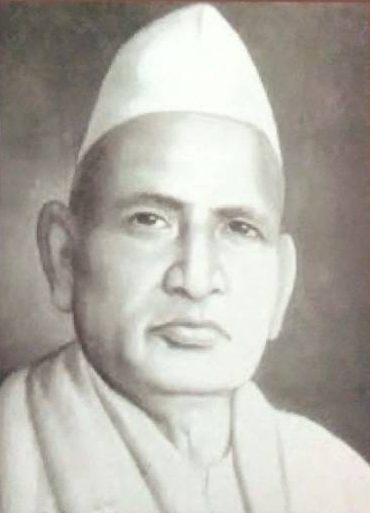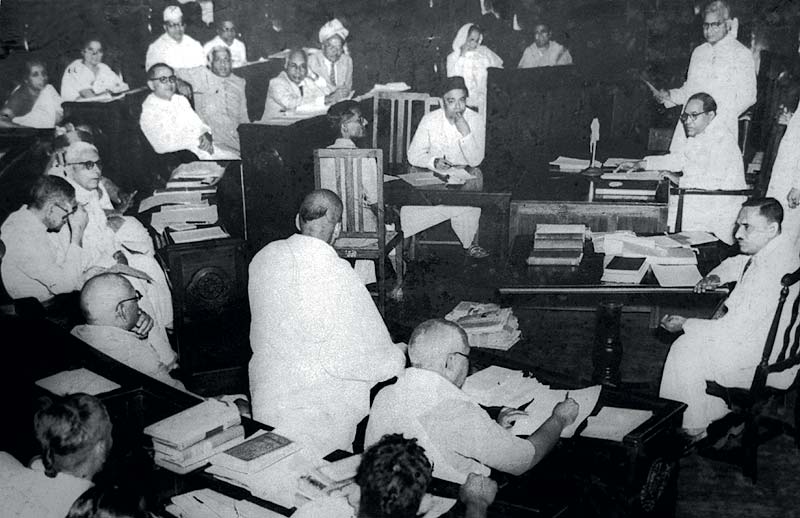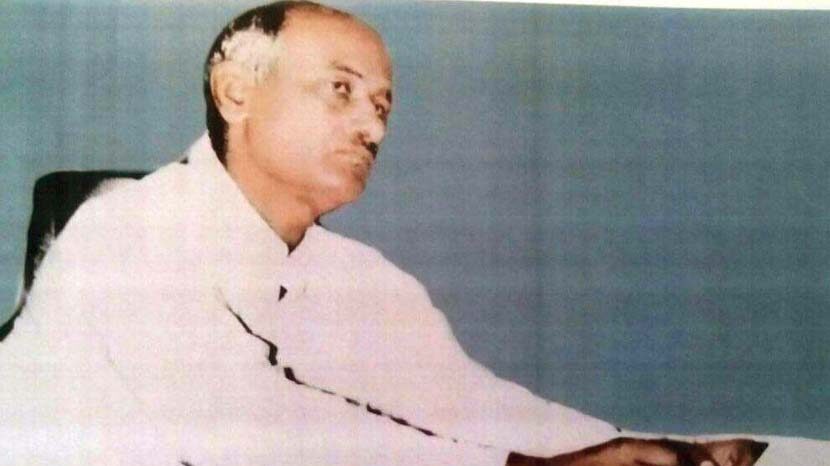Chandrika Prasad Jigyasu (1885 – 12 January 1974)
Barring a few exceptions like Rahul Sankrityayan and Premchand, Dwij values have always been deeply ingrained in the ideology and the literary works of the so-called mainstream modern Hindi literature. All – the rightists, the liberals, the leftists – have played their role in the shaping of the Dwij character of the modern Hindi literature. They have proclaimed the ideology, writings and writers promoting Dwij values and ritualistic beliefs as great and superior, while shunning and ignoring such ideologies, writings and writers that have sought to challenge Dwij values and worldview. Chandrika Prasad “Jigyasu” was a litterateur of the latter category. He laid firm foundations of Bahujan ideology in the Hindi belt. Underlining the rejection and apathy that Jigyasu had to face at the hands of the flag-bearers of the so-called mainstream literature, Kanwal Bharti writes: “Chandrika Prasad Jigyasu is virtually unknown in the world of Hindi literature. His name doesn’t figure in any of the histories of Hindi literature. In fact, histories of Hindi literature have totally ignored the stream which he represented. That stream was a revolutionary stream, which stood for social revolution and was opposed to the Varna system.” (Bharti, Kanwal, 2017, Chandrika Prasad Jigyasu Granthavali, Volume 1, p 13).
Born into a backward-class (Kalwar) family, Chandrika Prasad Jigyasu (1885 – 12 January 1927), like most other protagonists of modern renaissance, was a thinker, writer, translator, editor, publisher and social activist all rolled into one. He lived 83 years and wrote prolifically. He lit the lamp of Bahujan revolution. He joined India’s struggle against the British at Gandhi’s request and his assurance that Bahujans will get all their rights in Independent India. He actively participated in the Indian Independence Movement and was jailed on numerous occasions. Three of his works – Swadeshi, Kaumi Badshah Jawaharlal Nehru and Charkha – were branded incendiary and confiscated by the British government. But he soon became disillusioned. After Independence he was quick to realize that Brahmanism and not democracy had been established in the country. In 1966, he wrote a book titled Lokshahi Banam Brahmanshahi (People’s rule versus Brahmin rule). This 62-page book is divided into nine chapters and dwells on democracy and Brahmin rule in detail. Exposing Indian democracy, he wrote, “It is said that India is a democracy. But so many ‘cracies’ and ‘isms’ have been thrust upon democracy that it is gasping for breath. There is feudalism and capitalism; there is the domination of the government machinery and of bureaucracy; there is the rule of the leaders and then there is Brahmanism – the mother of all of them. … certainly, those whose hearts were swollen with pride and joy when India attained Independence and became a democracy are unhappy with this state of affairs … Just delve a bit deeper into the social conditions prevailing in India and you will realize that Brahmanism is ruling the roost” (ibid, Volume 4, p 35).
Also Read: Hero of Bahujan Consciousness: Chandrika Prasad Jigyasu
He has explained how anyone who challenges Brahmanism is demonized, no matter how just, sagacious and moral they may be. Jigyasu himself was a victim of this campaign of calumny. This key pillar of Bahujan renaissance was banished from the annals of Hindi literature for daring to oppose Brahmanism.
He quotes the example of Gandhiji to prove how strong the stranglehold of Brahmanism was on the country. He says that Gandhiji, at whose request and assurance he had joined the freedom struggle, also cowered before the terror of Brahmanism. He writes, “Brahmanism is such a terror in this country that Mahatma Gandhi, who did not fear taking on the mighty British Empire and who was called the Father of the Nation, was mortally afraid of it and used the totem of ‘Ramdhun’ to keep the Brahmins in good humour” (ibid, p 37). But Chandrika Prasad Jigyasu refused to be cowed down by Brahmanism and he had to pay the price for it, being ignored and shunned by the worthies of his field. He remained unheard and unsung.
It was 43 years after his death that in 2017, the entire corpus of his works was published by the Marginalised Publication, New Delhi, under the title Chandrika Prasad Jigyasu Granthavali. The four-volume, 1,460-page publication introduces us to the various facets of his life and his rich literary contributions.
His works compiled in the first volume include Aadi Nivasiyon Ki Sabhyta, Mohini Vidya, Picchda Varg Commission Ki Reportand Ishwar aur Gudde. The second volume includes Sant Pravar Raidas, Ravan aur Uski Lanka and Shri 108 Swami Achhootanandji. Shiv-Tatva Prakash; Utpatti, Isthiti aur Jansankhya; Bhadant Bodhanand Mahasthivir; and Babasaheb ka Jeevan Sangharsh form part of the third volume. The fourth volume includes Lokshahi Banam Brahmanshahi, Haihay-Vansh kee Shreshtha, Nari-Jeevan ki Kahani and poems penned by him. Kanwal Bharti, editor of Chandrika Prasad Jigyasu Granthavali,regrets that he could not access some of the writings of Jigyasu, including important ones like Manav Shrishti ka Vikas and Bauddha Dharma hi Sachcha Dharma.

In his book Sant Pravar Raidas, compiled in the second volume, Jigyasu throws ample light on the life and works of Raidas. He exposes the conspiracy to brahmanize Raidas and effectively rebuts the illogical and contradictory things said about the poet. He presents Raidas as a harbinger of social revolution. This book, which came out in 1959, was the first to contradict the much-publicized lie that Ramanand, a Brahmin and a Brahmanist, was Raidas’ Guru.
Aadi Nivasiyon ki Sabhyata appears at the beginning of Volume 1. There is little doubt that Jigyasu was a product of Achhootanand’s Aadi Hindu Movement. Achhootanand believed that the Shudras (including Ati-Shudras) were the indigenous inhabitants of India while the Dwijs were the descendants of the foreigner Aryans. Both Dalits and Backwards, including Jigyasu, were part of Achhootanand’s movement. Jigyasu took part in the public meetings of Achhootanand and often addressed them. Talking about the ideological affinity of Jigyasu and Achhootanand, Kanwal Bharti writes, “To take the work of Swamiji forward, Jigyasu wrote a voluminous book titled Bharat Ke Aadi Nivasi … the book ran into some 1,000 pages.” (Bharti Kanwal, Preface, Chandrika Prasad Jigyasu Granthavali, Volume 1, p 15) The chapter Aadi Nivasiyon Ki Sabhyta, which forms part of the Volume 1, is excerpted from the book. Bodhanand wrote the foreword to this book that remained in print for five editions. Bodhanand writes in his foreword, “It is sad and shameful that the glorious past of the backward and Dalit castes of India is entirely missing from the books on history in Hindi … It is our earnest hope that the original inhabitants of our India will be able to comprehend the essence of this useful book [Aadi Nivasiyon Ki Sabhyta].” (Chandrika Prasad Granthavali, Volume 1, p 39)
The book begins with a small poem by Jigyasu:
“Aadi niwasi bandhu! Lijiye, yah nij gaurav ka itihaas,
Arya-jati ne chal-kaushal se jiska kar diya tha sab nash,
Padhiye ise mitakar man kee sab durbalta, bhram, tam, traas
Hriday kamal yah khila karega navjivan ka divya prakash” (ibid p 43)
(O’ my indigenous inhabitant brothers, here is the history of your glory
Which the Aryans had obliterated with their deceit,
Read it and get rid of the weaknesses, misconceptions, darkness and pain of your heart
Your heart will bloom with the divine light of this new life)
The first volume also includes a book titled Picchda Varg Commission ki Report aur Picchde Varg ke Vaidhanik Adhikaron ka Sarkaar Dwara Hanan. The book shows that the interests of the Backward communities were Jigyasu’s key concern. The first edition of the book was published in 1957. It contains an extensive comment of Jigyasu on the report of the Backward Classes Commission appointed by the government on 28 June 1953 under Article 340 of the Constitution. Kaka Kalelkar chaired the commission. Badluram Rasik writes in the foreword to the book, “We [the backward classes] form 52 per cent of the country’s population. In a democracy, it is the majority which decides who will rule the country and that power is in our hands. So, rise and take the Harijans [Dalits] and Adivasis with you and make your strength 80 per cent. Take a vow that ‘we will not rest till the exploited, the oppressed and the Dalit people get their human rights, no matter how many sacrifices we may have to make’. You should remember that rights are snatched; no one ever got their rights by demanding them.” (ibid, p 261)
Jigyasu is also credited with introducing Dr Ambedkar’s writings to the Hindi speakers. He had written a biography of Ambedkar titled Babasaheb ka Jeevan Sangharsh (Sampoorna Jeevan Charit). Sixteen editions of the book were published. It was through this 145-page book that the Hindi-speaking populace came to know about the struggles of Ambedkar. Omprakash Valmiki, in his book Jhoothan, writes that it was through this book that he was introduced to the struggles and the thinking of Ambedkar. Jigyasu also got many of Ambedkar’s books translated into Hindi. These included The Annihilation of Caste (1964), The Untouchables (1968), What Congress and Gandhi Have Done to the Untouchables (1969), Mr Gandhi and the Emancipation of the Untouchables (1966) and Castes in India: Their Mechanism, Genesis and Development (1972). In 1972, he published the Hindi translation of a book on E.V. Ramasamy ‘Periyar’ titled, A Pen Portrait: Philosophy, Social Reform and Social Revolution.
Like Phule, the harbinger of the Bahujan renaissance, Jigyasu was an ardent supporter of the emancipation of not only the Shudras and the Ati-Shudras (Dalits and Backwards) but also of women. He had translated a book on the rise and the fall of women by Dr Ambedkar and had himself authored Nari Jeevan Ki Kahani. The book begins with the assertion that once men and women were equal and the women were not treated as slaves of men. He writes, “Evolutionary historians say that in the early days, both men and women were free. None was subordinate to the other. They could be friends but the women were not the slaves of men and both procured their food independently” (Granthavali, volume 4, p 147).
Like Ambedkar, Jigyasu, too, held the brahmanical system and the scriptures responsible for the slavery of women and declared that the Buddhist era was the era of the freedom of women. “In India, it was only in the Buddhist and the Upanishad eras when women could breathe easy. But this period was only 500 years, following which the managers of the Hindu religion again enslaved women by their rigid norms and their smooth talk.” (ibid, p 149-150).
Jigyasu also deserves credit for popularizing and expanding the Bahujan concept of Buddha. His publishing house was called Bahujan Kalyan Prakashan. A study of his writings shows that he transplanted in the Hindi belt the Bahujan renaissance initiated by Jotirao and Savitribai Phule – a renaissance which envisages the Shudras, the Ati-Shudras and the women (Bahujans) joining hands to free themselves from the slavery of Brahmanism and resolving to build an egalitarian society. Needless to say such a society can come into being only once the caste system, or Brahmanism, is destroyed. That was exactly what Jigyasu called for. He wanted to establish the rule of the people (Lokshahi) in the country by uprooting the rule of Brahmanism (Brahmanshahi).
Translation: Amrish Herdenia; copy-editing: Anil
References:
- Chandrika Prasad Jigyasu Granthavali, Volume 1, ed Kanwal Bharti, The Marginalised Publication, 2017
- Chandrika Prasad Jigyasu Granthavali, Volume 2, ed Kanwal Bharti, The Marginalised Publication, 2017
- Chandrika Prasad Jigyasu Granthavali, Volume 3, ed Kanwal Bharti, The Marginalised Publication, 2017
- Chandrika Prasad Jigyasu Granthavali, Volume 4, ed Kanwal Bharti, The Marginalised Publication, 2017





